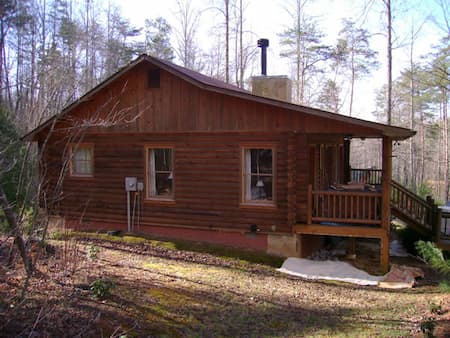What Is The Best Stain For My Log Home? Part 2

In our last post, I discussed the main difference you should consider between the two major types of stains. No, its not the endless oil or water based debate! Its the film forming or penetrating debate!
There’s really no debate, each can be good, depending on the circumstances. Film formers look really nice, are more highly finished, may have more of a sheen, etc. On the down side, they tend to get mold and mildew behind the film if they are not cleaned every year, and coated at the proper intervals.
A few major film formers are Sikkens Log and Siding, Permachink’s Ultra 2 and the topcoat Lifeline Advance, Weatherall’s UV Guard and UV Guard 2, Sashco’s Capture and Cascade system, and others. Again, all of these can work very well in the right circumstances, and with the right maintenance.
How about the non film formers? Let’s go with the cons first.
- They don’t have a highly finished appearance, at least not as long.
- They flatten out within a couple months to a natural finish.
- They don’t last quite as long between recoating, usually every other year on decks and sunny sides of your home.
- You spend more on labor many times in the long run, because you have someone staining your house twice as often. This is not always true, but there are few exceptions.
- Sometimes, a penetrating finish can actually become a film due to many coats being applied, and then they gain all the failings of a film former.
For the pros, there are several.
- They usually are cheaper, so you spend less on stain.
- They usually only require one or two coats of stain, so you spend less on labor upfront, too.
- They will never peel, crack, flake, or otherwise fail in this way that requires heavy blasting to remove.
- When they do fail, they can be washed and recoated if you’re going back with the same stain, or easily stripped if you wish to switch to a different stain.
Some common ones are Olympic Toner, Penofin, Wolmans F&P, Woodguard, Armstrongs, Readyseal, and many others.
One last thing to consider.
Readyseal, which we have used with great success, is kind of unique. Although it does have some finely ground resins, it relys on the oils that penetrate to actually do most of the protecting of the wood from water. It has a very low solvent level, not really common with a penetrating stain, most of which use a lot of solvent to help the resins penetrate the wood.
Because of using a very thin oil to carry the resins in, and because the oil stays liquid in the wood, it has the ability to provide CUMULATIVE protection. This means that as maintenance is done, the oil level in the wood continues to rise, allowing you to go longer between coating, and raising the sheen, color richness, and durability of the wood.
We’ve had great success pairing up a more thorough prep method, abrasive blasting, with application of Readyseal, allowing some homeowners to afford the blasting that they would have otherwise tried to avoid. The long term benefit to them is that they have a great stain on bare wood, so they know there will never be a compatibility issue. Also, they can now vary their time frame between coats, because Readyseal can be simply washed and re-applied, even years after the first coat is applied.
Of course, some of our clients want a high end finish, and for them, we offer to apply the Readyseal at 6 month intervals until it builds up and gives them a satin sheen. We’ve been able to achieve this typically with 3 coats. At that point, it becomes very easy to perform our annual maintenance, with little color loss from low pressure washing.
Feel free to call or email me through the website with any other questions you may have!